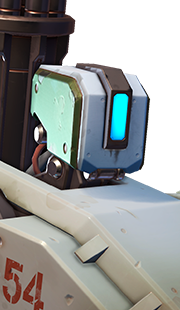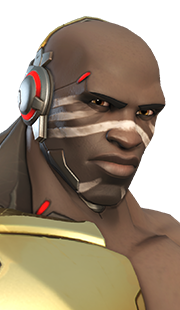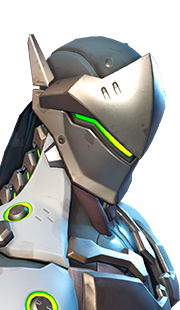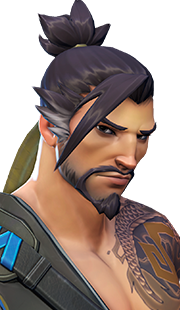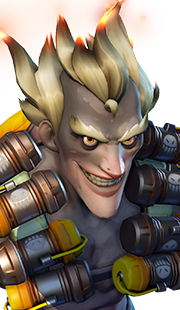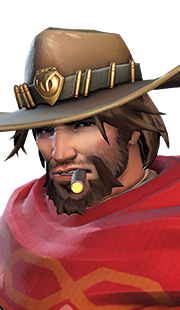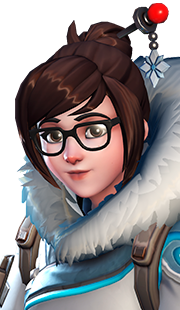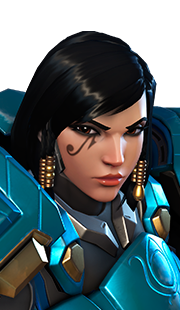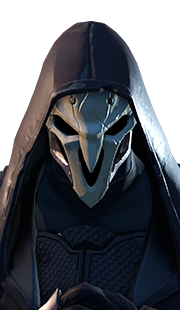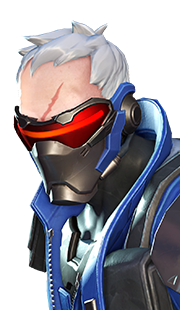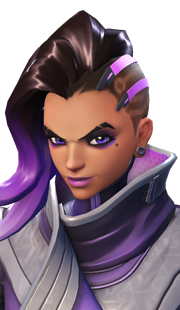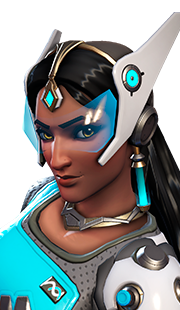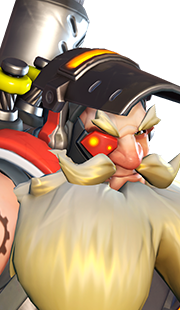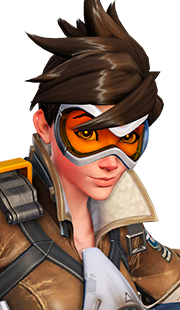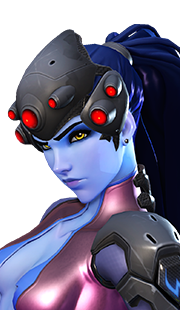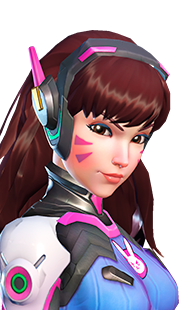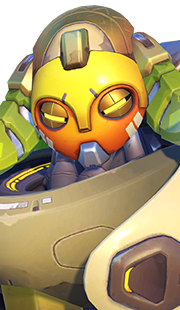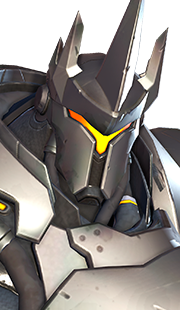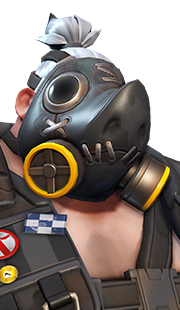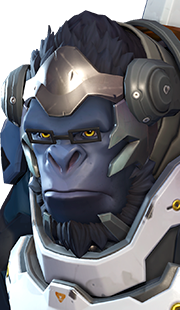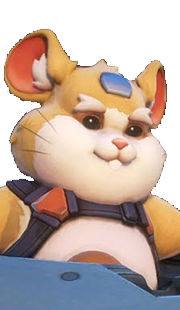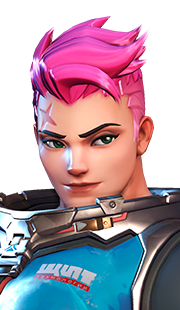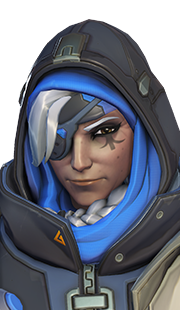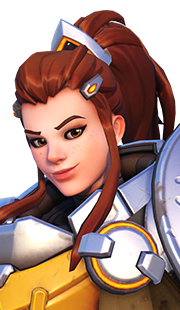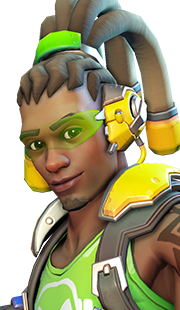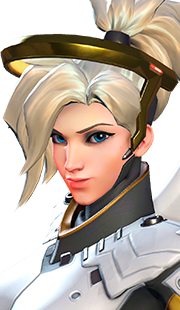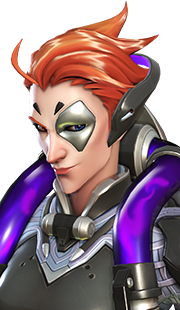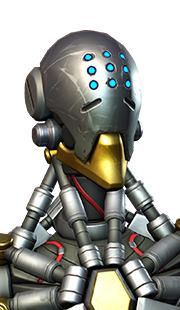McCree Playstyle
Table of Contents
On this page, you will find out how to properly play McCree. From general playstyle advice, to more specific advice like ultimate usage or combos, we tell you everything we think matters to master your hero.
The other pages of our McCree guide can be accessed from the table of contents on the right.
McCree Playstyle Introduction
McCree has arguably one of the most straightforward playstyles in the game. While McCree can be boiled down to a point-and-shoot hero, his abilities do provide a number of interesting gameplay tactics that McCree players should master. However, there are basics to playing McCree well, that, when mastered, will drastically increase your effectiveness. Although McCree carries combo potential, practicing these Overwatch mechanics will award players with better results than simply using McCree's abilities in the correct ability-chains.
McCree's Mechanics
Aim and Reaction
While both of these mechanics may seem obvious, many players forgo practicing these abilities because their McCree play will probably get worse before it gets better. However, if you stick with these rules, and master them one-by-one you will get better at McCree!
Rule 1: Never Use Fan the Hammer When Fighting Heroes
As we discussed in the ability section, ![]() Fan the Hammer only out
damages McCree's primary fire when used on
structures that cannot suffer headshots. Therefore, Fan
the Hammer should only be used to destroy barriers and
other enemy structures, like Symmetra's
Fan the Hammer only out
damages McCree's primary fire when used on
structures that cannot suffer headshots. Therefore, Fan
the Hammer should only be used to destroy barriers and
other enemy structures, like Symmetra's ![]() Teleporter, when
every bullet will hit the structure.
Teleporter, when
every bullet will hit the structure.
However, against heroes, Fan the Hammer is simply a crutch. You may be able to secure a kill with Fan the Hammer, but every time you use the ability to fight heroes, you are training your mind to shoot at the enemy's body rather than their head. This is because you must aim at the heroes' gut to ensure that Fan the Hammer's spread will successfully hit a target. Training your mind to aim at the gut when heroes get close is a bad habit, as scoring headshots is by and large the most effective way to play McCree. Two headshots deal more damage than landing all Fan the Hammer shots, and you still have 4 in the cylinder ready to go. We understand you do not want to let your team down, and at times Fan the Hammer may seem like the best option, but in reality, you are capping your true potential when you use Fan the Hammer in fighting enemy heroes. If you cannot kick the habit while playing competitive matches, we recommend you play free-for-all until you can go 20 matches in a row without using Fan the Hammer.
Rule 2: Never Take Your Finger Off the Trigger When Fighting an Opponent
Although difficult for those who believe they need to line up a shot before
using they use their primary fire, never relenting
your ![]() Peacekeeper shots when taking on an enemy will do two things for
you. First, you will realize that the half of a second you have between shots
is plenty of time to line up your your next one. Playing McCree at a high level
requires that you get off your Peacekeeper shots as quickly as possible. You
can not take a shot, move your mouse, than press the fire button again as
quickly (or as smoothly) as you can just hold down the trigger and get used to
aiming while anticipating the next shot. As McCree, duels
happen on a regular basis, where you need every second you can get to stay
alive. Keeping your finger on the trigger gets those shots off faster than ever
before.
Peacekeeper shots when taking on an enemy will do two things for
you. First, you will realize that the half of a second you have between shots
is plenty of time to line up your your next one. Playing McCree at a high level
requires that you get off your Peacekeeper shots as quickly as possible. You
can not take a shot, move your mouse, than press the fire button again as
quickly (or as smoothly) as you can just hold down the trigger and get used to
aiming while anticipating the next shot. As McCree, duels
happen on a regular basis, where you need every second you can get to stay
alive. Keeping your finger on the trigger gets those shots off faster than ever
before.
Additionally, using this tactic will not only increase your accuracy, but your ability to flick properly. Trying to shoot once you get your reticle on your enemy often means your enemy is already a move ahead of you by the time you actually pull the trigger. You actually create a more difficult flick for yourself by having to perform two actions (aiming Peacekeeper, firing Peacekeeper). When using a flick in between McCree's shots, you only have to perform one action (aiming Peacekeeper), which helps increase your accuracy once you get the timing down. When practicing this trick, you will miss shots (especially if you have never played this way before) but you will get better with time, and you need to remember that professionals constantly miss shots too. If you want to train, try to use the training ground targets with metal plates. Try to go from one target to the next while holding down the trigger. If you need more practice, create a custom game with only easy Zenyattas on the enemy team and yourself on the other. Use control maps to have the targets bundle together and practice your aim while firing non-stop. Your aim and ability to fire off rounds at a fast pace will increase dramatically.
Rule 3: Secure a Headshot Before Shooting the Body
Although hitting body shots deals damage, high level McCrees should always attempt to get a headshot first before finishing the opponent with a body shot. Landing a headshot early in a duel leads to a number of favorable outcomes. First off, the enemy is likely to get nervous. When attempting to use an ability to close the gap on McCree, their is nothing more intimidating than hearing the "dink" sound that comes with headshots and realizing you are one bullet away from death. Second, scoring a headshot puts the opponent on the defensive. Enemy flankers thrive on infiltrating the enemy backline, and to do so effectively, they need health. When they start out their approach with little health left, their level of aggression significantly lowers, making them an easy target. Last but not least, landing a headshot on an enemy is invigorating for a McCree player, and gives them a boost of energy that typically wins them the duel. For all of the reasons mentioned above, a player should always focus on shooting the head with their first two shots. Scoring a headshot with one of these shots will put you in the driver's seat of the fight, and make your opponents fear you.
Positioning
Given your abysmal mobility as McCree (Combat Roll
is not effective for getting away from enemies), you should attempt to stay
in the general vicinity of your teammates. Other offensive heroes like
Tracer, Genji, Pharah, and even Soldier: 76,
have medium to high mobility that affords them the ability to make a mistake in
positioning and get away with it. McCree does not
have the same luxury. McCree should try to stay with the team and
split to high ground between
engagements. After a fire fight, McCree has plenty of
time to secure a position on high ground to try his luck with distanced
![]() Peacekeeper shots. However, your ability to do this is dependent on
the enemies' team composition. If the enemy
is running dive, you should be staying with your supports
and trying to peel flankers off
of your backline. However, if the enemy is running
more of a standard composition you should
be more free to split from your supports and try to deal damage from high
ground. As a general rule of thumb, you never want to be more than 3
seconds away from your supports, as a defensive McCree can work wonders for
your skill rating.
Peacekeeper shots. However, your ability to do this is dependent on
the enemies' team composition. If the enemy
is running dive, you should be staying with your supports
and trying to peel flankers off
of your backline. However, if the enemy is running
more of a standard composition you should
be more free to split from your supports and try to deal damage from high
ground. As a general rule of thumb, you never want to be more than 3
seconds away from your supports, as a defensive McCree can work wonders for
your skill rating.
Offensive Combos with McCree
We are going to give you the combo first, then we will break down the reasoning behind the combo and when to utilize the combo situationally.
- Fire shots from
 Peacekeeper.
Peacekeeper. - If a medium-ranged or prolonged duel use
 Combat Roll to reload.
Combat Roll to reload. - If a barrier gets in your way, use
 Fan the Hammer.
Fan the Hammer. - If target ever draws near, use
 Flashbang to stun and score a
headshot.
Flashbang to stun and score a
headshot.
This is it. This is McCree's offensive combo, defensive combo, and practically how you combo abilities with this character. McCree is much more mechanics based than he is ability based.
McCree's Ultimate Usage
To achieve results from Deadeye, the first main rule is to take what you can get. Many players try to hold off on using Deadeye until they can kill three or more enemies. The reality is that obtaining three kills with Deadeye is more likely to be the exception as opposed to the rule. For this reason, players should always secure a kill with Deadeye whenever they can.
Another vital rule of Deadeye is that a player should rarely (if ever) attempt to use McCree's ultimate when his or her team is not around. Deadeye makes McCree extremely vulnerable, and even when using a sneaky position, McCree is still easily countered if the enemy team is not distracted by your team.
Initial positioning is the difference maker between good and bad uses of Deadeye. Since McCree can barely move once lining up his targets, players need to make sure to secure a good position that surveys the battlefield.
If possible, McCree should use high ground when utilizing his ultimate. McCree cannot move quickly while channeling Deadeye, but his character model still drops from one story to another at the same rate of speed. Therefore, McCrees often start a Deadeye while on high ground and step off of the platform while they channel the ability. Then, McCree will start firing his shots off in mid-air, making him a hard target to counter since he is moving at the normal rate of speed while falling.
About our Author
Mournflakes is a flex Grandmaster Overwatch player who boasts a career high SR rating of 4433. His favorite heroes are Roadhog, Soldier: 76, and Ana. He has played Overwatch since its initial release, and has put over 700 hours into competitive play. When not writing guides, you can catch Mournflakes streaming on his Twitch channel.
- Blizzard at Gamescom 2024
- Icy Veins Seeking Writers for Zenless Zone Zero: Apply Today!
- No BlizzCon in 2024
- Blizzard Games Return to China: New Agreement Signed With NetEase
- Blizzard Reportedly Reuniting with NetEase to Bring Back WoW in China
- Ex-Activision Blizzard CEO Bobby Kotick Shows Interest in Buying TikTok
- Timeline of Blizzard Presidents
- Johanna Faires Appointed Blizzard Entertainment President
